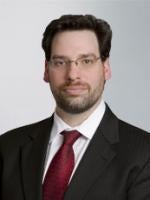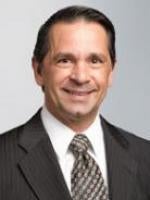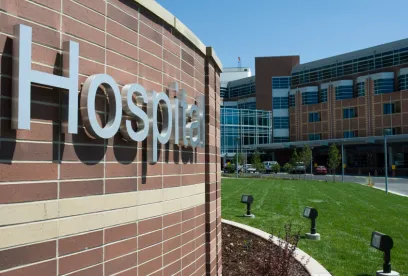A Federal Appeals Court has sided with the FTC and preliminarily blocked the proposed merger of the largest hospitals in the Harrisburg, Pennsylvania area, and Penn State Hershey Medical Center and PinnacleHealth System. The Third Circuit's decision in FTC; Commonwealth of Pennsylvania v. Penn State Hershey Medical Center; Pinnacle Health System overturns an earlier District Court ruling that denied the injunction and questioned the validity of the FTC's analysis of the potential competitive impact of the tie-up. It does not mean the end of the transaction though, and the outcome in a similar FTC hospital challenge that remains under review potentially could undermine similar challenges going forward.
In May of 2016, the U.S. District Court denied the Agency's request to halt the Penn State Hershey/PinnacleHealth transaction pending the outcome of an FTC administrative trial on the legality of the transaction under the Clayton Act. The District Court disagreed with how the Agency defined the relevant geographic market, and instead considered a broader relevant geographic market that included additional hospitals as competitors, and that would have minimized the potential for anticompetitive effects as a result of the merger.
Penn State Hershey Medical Center is a 551-bed hospital in Hershey, Pennsylvania offering a full range of medical services. PinnacleHealth System includes three community hospitals in central Pennsylvania, with a total of 646 beds. The Agency alleged, among other things, that the parties compete vigorously "for inclusion in commercial health plan networks . . ." and that the combined system's bargaining leverage would be increased as a result of the merger – resulting in higher prices charged to commercial insurers. To support its claim, the Agency proffered a narrow relevant geographic market that includes only the four-county region comprised of the Harrisburg Metropolitan Statistical Area, and claimed that the merged system could account for as much as 64 percent of general acute care services in that market. The District Court disagreed and denied the FTC's requested injunction.
The Third Circuit, however, said that the District Court incorrectly applied the "hypothetical monopolist test." The hypothetical monopolist test asks whether a hypothetical monopolist could profitably impose a "small but significant non-transitory increase in price" – or SSNIP – because buyers do not have realistic alternatives. According to the Third Circuit's decision, the District Court's geographic market included hospitals which are not alternatives for the health plan networks to turn to in the face of a SSNIP. The Third Circuit found three errors in the District Court's analysis: (1) it was more closely aligned with a discredited economic theory relating to patient flow data; (2) it focused on the response of patients to a price increase – neglecting the likely response of insurers; and (3) it improperly relied, in part, on private agreements between the parties and insurers ensuring that post-merger reimbursement rates would hold steady for agreed periods.
The Third Circuit found fault with the fact that the District Court's formulation and application of the hypothetical monopolist test resulted in a relevant geographic market that did not take insurers into account. In the healthcare market, payors negotiate prices for hospital services and are arguably more directly impacted by price increases than patients are. The Third Circuit relied on the Agency's claim that more than ninety percent of patients who live in Harrisburg utilize Harrisburg area hospitals, and on payors' assertions that as a result they could not successfully market a plan in the Harrisburg area without Hershey and Pinnacle.
On the Agency's relevant geographic market, adopted by the Third Circuit, the post-merger HHI – an index used to measure market concentration based on the market shares of firms in the relevant market – would be 5,984. The figure would be double that of a highly concentrated market under the horizontal merger guidelines, and would represent an increase in the HHI is 2,582. Under the District Court's reading of the relevant market, which included numerous additional area hospitals as competitive alternatives, the concentration levels would have been significantly lower, and less likely to support a successful challenge.
While not central to its decision, the Third Circuit also addressed the parties' efficiencies defense, and it found unpersuasive. Skeptical that the defense exists at all, the Court said it has "never formally adopted the efficiencies defense," and "[n]either has the Supreme Court." The Agency likewise has been skeptical of efficiencies defenses for some time, and this language likely will become a standard bearer in Agency briefs. The takeaway is that strong, quantified, merger specific and verifiable data is a necessary prerequisite for putting forth a credible efficiencies defense.
A similar challenge in which the Agency also failed to secure a preliminary injunction is presently on appeal to the Seventh Circuit. Advocate Health Care Network's pending merger with NorthShore University HealthSystem would add NorthShore's four hospitals to one of the largest health systems in Illinois. In that matter, the Agency argued the combined system, with as much as 55 percent of the general acute care inpatient hospital services market, would harm consumers by reducing hospital competition in the northern Chicago suburbs. Similar to the Hershey/Pinnacle challenge, the Agency claims that commercial payers offering health plan networks in the relevant area need to have at least one of the systems in the network – and that Advocate and NorthShore compete for inclusion in those networks. The United States District Court for the Northern District of Illinois denied the Agency's request for a preliminary injunction, finding in part that the relevant geographic market proffered by the Agency was too narrow, and that certain hospitals which were excluded from the Agency's geographic market should rightfully be considered competitive alternatives. Following the Third Circuit's reversal in the Hershey/Pinnacle matter, the Agency has urged the Seventh Circuit to follow suit and grant a preliminary injunction there on similar grounds.
All eyes are now on the Seventh Circuit's decision in the Advocate/NorthShore matter. With the Agency aiming to settle uncertainty relating to its approach to geographic market definition, practitioners and health system executives evaluating potential hospital combinations must take very seriously potential impact on payors, and what payor reaction to tie-ups is likely to be. While this has long been a part of the calculus in hospital mergers, it now should be front and center from the outset, and defenses to claims relating to payor opposition must be anticipated and put in place.
The Hershey/Pinnacle matter is set for an administrative trial before the Federal Trade Commission to begin October 18.





 />i
/>i
